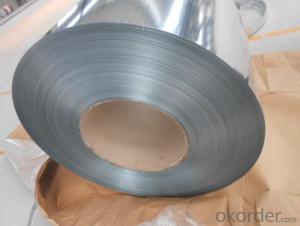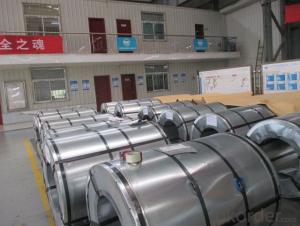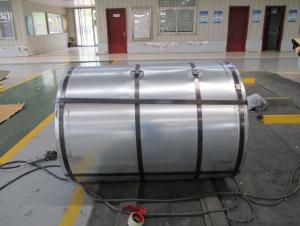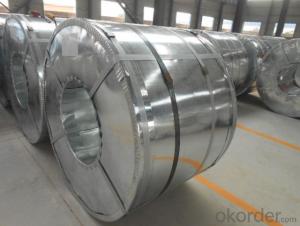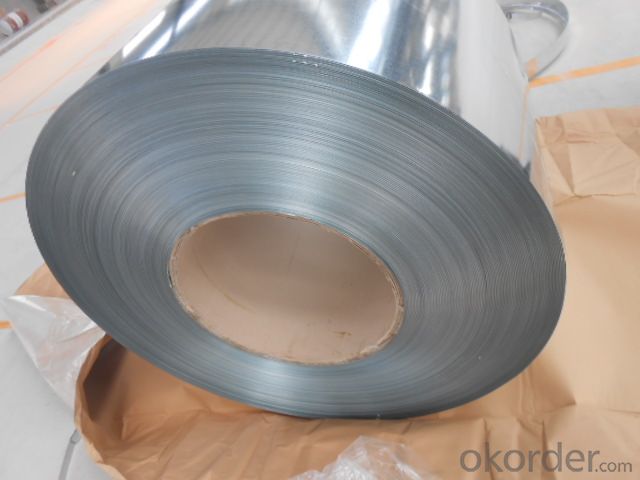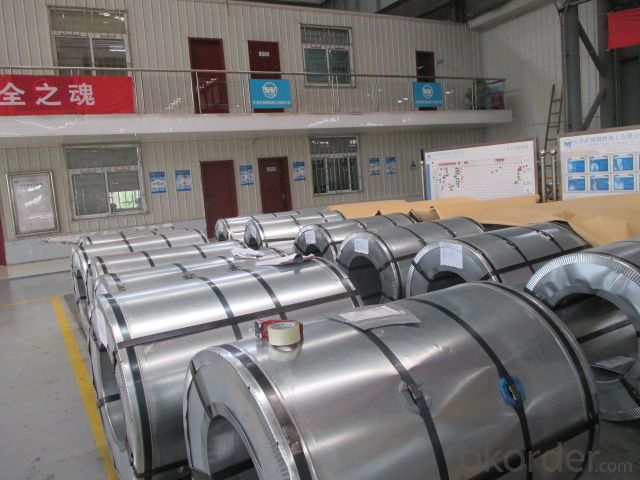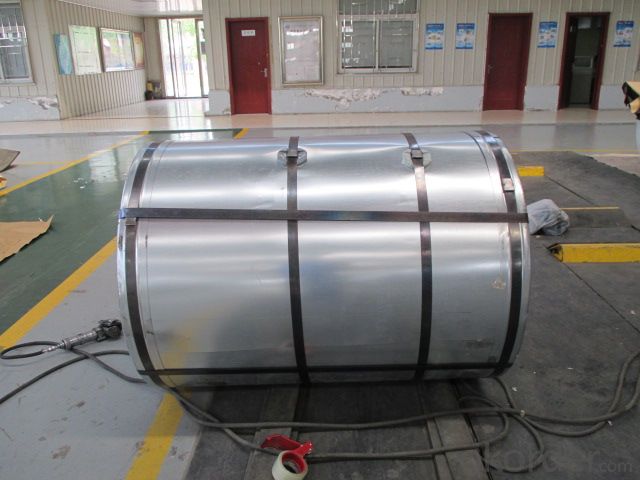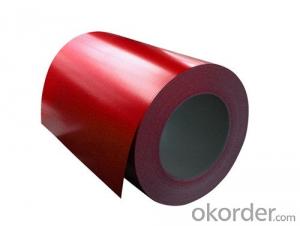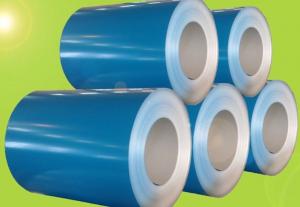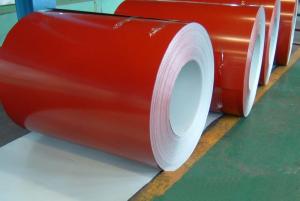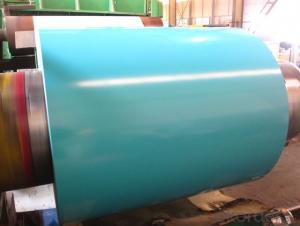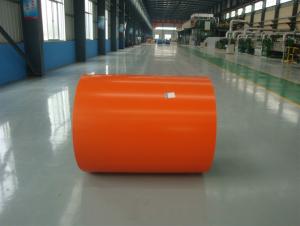STAINLESS STEEL COILS with thickness 2mm
- Loading Port:
- China Main Port
- Payment Terms:
- TT OR LC
- Min Order Qty:
- -
- Supply Capability:
- -
OKorder Service Pledge
OKorder Financial Service
You Might Also Like
STAINLESS STEEL COILS
Packaging & Delivery
Packaging Detail: seaworthy export package
Delivery Detail: on request
Specifications
1. more than 10 years’ experience on this field
2. advanced equipments
3. competitive price
4. soonest delivery
Product Description :
Commodity
STAINLESS STEEL COILS
Technical Standard: Steel Grade &Standard:J1
Surface Treatment:NO.1
Hot rolled Annealed and Pickled(HRAP)
Grade: J1 , Prime quality
Mill Edge. No connection point in each coil.Component: Ni:1% , Cu: 0.65-0.9%, Cr: 13%, Mn: 10–12%, C: 0.09-0.12%
Package:Properly packed for ocean freight exportation in 20''container
Application::home appliances, constructions, building, machineries
Our Advantages :
1. Expertise:
More than 10 years of manufacture: we know how to properly handle every step of production.
2. Competitive price:
We can offer competitive prices to our customers.
3. Accuracy:
We have excellent technicians and leaders, which can ensure our products are exactly what you want.
4. Materials:
All steel coils are made of high-quality raw materials.
5. Certificate:
Our products are certified by ISO9001.
6. Productivity:
We have large-scales of production lines,, which can guarantee all your orders will be finished in earliest time.
The furnace heating style: improved Sendzimir heating technology
Hourly output: max.76.3t/h
Process after coating: tension leveling, Passivation or oiling
Our Service
Our quality
Test Equipments of Prepainted Galvanized Steel Coil : Salt-spray tester; Atomic absorption spectrophotometer; Rockwell typer hardness tester; Tensile test machine; Metrohm titration; Laboratory Bend test machine.
Our packing
Properly packed for ocean freight exportation in 20''container, galvanized metal fluted rings on inner and outer edges, galvanized metal & waterproof paper wall protection disk, galvanized metal & waterproof paper around circumference.
R&D department
R&D department concentrates on researching and developing reliable products with best quality. The quality department test and control every process of production to guarantee the best quality of product
- Q: What are the different coil packaging materials used for steel coils?
- Different materials are used for packaging steel coils, each with its own unique properties and benefits. Some of the most commonly used materials are as follows: 1. Stretch film is a flexible material that tightly wraps around the coil, providing protection against dust, moisture, and scratches. 2. Steel strapping is a strong and durable option that ensures the coils remain tightly bound during transportation or storage, thanks to its high tensile strength and resistance to breakage. 3. Plastic strapping, on the other hand, is a lightweight and cost-effective alternative to steel strapping. It offers good shock absorption and is resistant to rust and corrosion, making it suitable for smaller or lighter steel coils. 4. Paperboard is an environmentally friendly packaging material that provides a protective layer against dust and minor impacts. It also allows for slight breathability to prevent moisture buildup. 5. Wooden crates are commonly used for large or heavy steel coils, as they offer sturdy support and protection during handling, transportation, or storage. 6. Corrugated cardboard is a versatile and lightweight material suitable for smaller steel coils. It provides cushioning and protection against minor impacts, and it is easily recyclable. The choice of packaging material for steel coils depends on factors such as coil size and weight, transportation requirements, and the desired level of protection. Each material has its own advantages and should be selected based on the specific needs of the steel coil packaging.
- Q: Iron melts faster when there will be low carbon in Iron.During steel making the molten Iron gets purified and alloying being done through the process. How the carbon is being controlled at Iron melting stage and what it is called?
- Steel is usually made in a two-step process. As you may know, carbon, in the form of coke, is added to the iron ore during the initial smelting process. This is the first step. The conversion of iron ore into raw iron is accomplished with a blast furnace. Carbon dissolves with the iron during the smelting process. The amount of carbon in the iron is generally not controlled at this point as this would be too difficult, the excess carbon is removed in the next step. The result is pig iron which is crude iron that has a very high carbon content, and a large amount of impurities. Pig iron is almost as brittle as glass, and it is useless in this form. In most modern steelmaking operations, molten pig iron is tapped from the blast furnace three or four times per day- it is not allowed to cool. The liquid pig iron is carried in ladles directly to a Basic Oxygen Furnace which converts the pig iron into steel. The basic oxygen converter uses a stream of pure oxygen to burn off the excess carbon. Impurities are also burned off, particularly phosphorus, silicon, and sulfur (which damage the steel's properties.) These elements all have a much higher affinity for oxygen than iron does, so the iron itself remains unchanged. Once the carbon content and the impurities are reduced to the desired level. The oxygen is shut off, and the iron has now become steel. At this point other alloying elements may be added, such as chromium, manganese, or molybdenum. These elements improve the steel's properties, but also add to it's price. If necessary, more carbon can be added as well if the carbon content has accidentally dropped too low. Finally, molten steel from the basic oxygen furnace is poured off. It can be cast into ingots, billets, or thin slabs.
- Q: How do steel coils contribute to energy efficiency in transportation?
- Steel coils contribute to energy efficiency in transportation in several ways. Firstly, steel coils are lightweight and have a high strength-to-weight ratio. This means that less steel material is required to carry the same load compared to other materials, such as wood or concrete. As a result, the overall weight of the transport vehicle is reduced, which leads to lower fuel consumption and emissions. Secondly, steel coils are highly durable and can withstand harsh conditions during transportation. They have excellent resistance to corrosion, impact, and fatigue, ensuring a longer lifespan for the transport vehicle. This durability reduces the need for frequent repairs or replacements, resulting in reduced energy consumption and material waste. Furthermore, steel coils are easy to handle and transport. They can be easily loaded and unloaded from trucks, trains, or ships due to their compact and standardized size. This efficiency in handling reduces the time and energy required for loading and unloading operations, thereby increasing overall transportation efficiency. Additionally, steel coils can be efficiently stacked and stored, maximizing the use of available space in transport vehicles. This reduces the number of trips required to transport the same amount of goods, resulting in less energy consumption and lower transportation costs. Lastly, steel is a highly recyclable material. At the end of their life cycle, steel coils can be easily recycled and used to produce new steel products. This reduces the demand for raw materials and the energy required for manufacturing new products, contributing to overall energy efficiency in transportation. In conclusion, steel coils contribute to energy efficiency in transportation through their lightweight, durable, easy-to-handle, and recyclable nature. These characteristics result in reduced fuel consumption, lower emissions, decreased maintenance needs, efficient use of space, and reduced material waste, all leading to a more sustainable and energy-efficient transportation system.
- Q: What are the common surface treatments for steel coils?
- The common surface treatments for steel coils include galvanization, which involves coating the steel with a layer of zinc to protect against corrosion, as well as painting or powder coating to provide additional protection and enhance aesthetics.
- Q: Can steel coils be coated with vibration-damping materials?
- Yes, steel coils can be coated with vibration-damping materials. These materials, such as rubber-based compounds or specialty coatings, can help reduce vibrations and dampen the noise generated by the steel coils during operation.
- Q: What are the different types of steel coil slitting blades?
- There are several different types of steel coil slitting blades, including circular slitting blades, crush cut slitting blades, and razor slitting blades. Each type has its own unique design and is used for specific applications in the steel coil slitting process. Circular slitting blades are commonly used for high-speed slitting and provide precise and smooth cuts. Crush cut slitting blades are designed to crush and shear the material, making them suitable for cutting delicate or fragile materials. Razor slitting blades have a sharp edge that slices through the material, making them ideal for thicker or tougher materials. Overall, the choice of blade type depends on the specific requirements of the slitting process and the type of material being cut.
- Q: What are the surface treatments for steel coils?
- There are several surface treatments available for steel coils, each serving a specific purpose and offering unique benefits. Some common surface treatments for steel coils include: 1. Hot-dip galvanizing: This process involves immersing the steel coil in a bath of molten zinc, resulting in a protective layer of zinc coating on the surface. Galvanizing provides excellent corrosion resistance, making the steel coil suitable for outdoor applications in harsh environments. 2. Electro-galvanizing: This method uses an electrolytic process to deposit a thin layer of zinc onto the steel coil's surface. Electro-galvanizing provides good corrosion resistance, but the coating is generally thinner compared to hot-dip galvanizing. 3. Pre-painting or pre-coating: Steel coils can be coated with paints or other coatings before being formed into final products. This surface treatment enhances the coil's aesthetic appeal while offering protection against corrosion, weathering, and other environmental factors. 4. Pickling and oiling: This surface treatment involves removing oxides and scale from the steel coil's surface by immersing it in an acid solution. After pickling, the coil is typically coated with oil to prevent rust formation during storage and transportation. 5. Phosphating: Phosphating is a chemical conversion coating process that forms a layer of phosphate on the steel coil's surface. This treatment improves the adhesion of subsequent coatings, such as paints or primers, while also providing some corrosion resistance. 6. Organic coatings: Steel coils can be coated with various organic materials, such as epoxy, polyester, or polyurethane, to enhance their corrosion resistance and aesthetic appearance. These coatings offer a wide range of colors, textures, and finishes, making them suitable for diverse applications. It is worth noting that the choice of surface treatment for steel coils depends on the intended application, environmental conditions, and desired appearance. Manufacturers and end-users must carefully consider these factors to select the most appropriate surface treatment for their specific needs.
- Q: How are steel coils used in the production of HVAC equipment?
- Steel coils are commonly used in the production of HVAC equipment as they serve as the primary component in heat exchangers. These coils are responsible for transferring heat between the refrigerant and the air, allowing the equipment to cool or heat the surrounding space effectively. The steel coils are designed to maximize surface area and optimize heat transfer, ensuring efficient and reliable operation of HVAC systems.
- Q: What brand steel tapes are of good quality?
- Personal feeling is also good for the Great Wall Seiko tape, upstairs several estimates are the production of steel tape manufacturers, of course, that their goods well. Our unit now buy all the Great Wall Seiko goods, said the tape is good, not because it is so durable
- Q: How are steel coils inspected for uniformity?
- Steel coils are inspected for uniformity through a series of visual and mechanical tests. Firstly, the external appearance of the coil is examined to ensure it is free from any visible defects such as dents, scratches, or rust. This is important as it ensures the coil's overall integrity and prevents potential issues during further processing. Next, the thickness of the coil is measured at various points using non-destructive testing techniques like ultrasonic or magnetic particle inspection. This helps identify any variations in thickness, which could affect the coil's overall quality and performance. Additionally, the width of the coil is measured using precision instruments to check for any deviations from the required specifications. This ensures that the coil is within the desired width range, which is crucial for compatibility with downstream processes and applications. Furthermore, the weight of the coil is measured to verify if it falls within the specified range. This is typically done using weighing scales or load cells, ensuring that the weight is consistent and meets the required standards. In terms of internal inspection, steel coils are sometimes subjected to eddy current testing, a non-destructive method that detects surface and near-surface defects. This technique uses electromagnetic induction to identify any irregularities in the metal, enabling the identification of defects such as cracks, voids, or inclusions. Overall, a combination of visual inspections, thickness measurements, width checks, weight verification, and internal testing methods ensures that steel coils are thoroughly inspected for uniformity. These rigorous inspection processes help guarantee the quality and reliability of the coils, allowing them to meet the industry standards and customer requirements.
Send your message to us
STAINLESS STEEL COILS with thickness 2mm
- Loading Port:
- China Main Port
- Payment Terms:
- TT OR LC
- Min Order Qty:
- -
- Supply Capability:
- -
OKorder Service Pledge
OKorder Financial Service
Similar products
Hot products
Hot Searches
Related keywords
